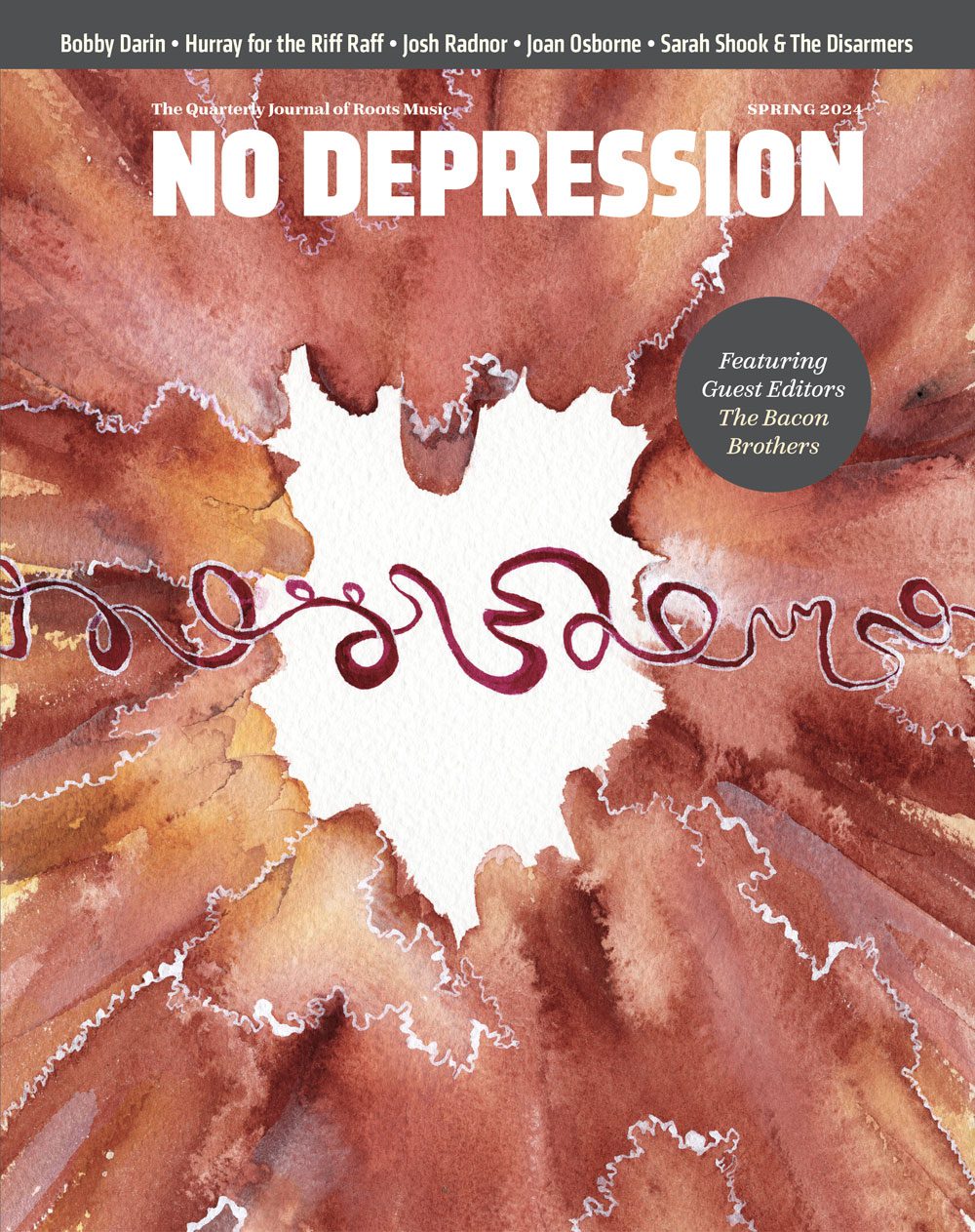Gram Parsons & The Fallen Angels
[Editor’s note: In recent discussions with a couple of our contributors, Rob Patterson and Bud Scoppa, we discovered that both had been among a small crowd on hand for a Gram Parsons gig at New York’s legendary Max’s Kansas City nightclub in March 1973. We asked them both to write about what they remembered of the gig for No Depression. What follows are their timely “reviews” of a show that happened nearly a quarter-century ago….]
GRAM PARSONS & THE FALLEN ANGELS
Max’s Kansas City (New York, NY)
March 1973
If it weren’t for Gram Parsons and Sweetheart of the Rodeo, I might not have become the country music fan I’ve been for over two decades now. And if it hadn’t been for The Nitty Gritty Dirt Band, I would never have seen Gram Parsons.
It was my sophomore year of college in upstate New York. Many mornings of the week, I would awake to the sound of Hank Williams playing on the stereo in the other room after my roommate, Mike Santacroce, got home from his first class of the day. We were devoted fans of what was simply called country-rock in those days, as well as starting to dig into its roots. Campus concerts were limited to one or two a semester, so I was more than ready to pile into Mike’s Jeep Wagoneer one weekend for a road trip to New York City to see the Dirt Band at Town Hall. But when we got to Mike’s home in New Jersey, my heart dropped when I saw in the Village Voice that Gram Parsons was playing Max’s Kansas City on the same night as the Dirt Band concert, for which we already had tickets. So when we arrived at Town Hall to find the show was canceled, I was actually delighted. We happily headed downtown to Max’s.
As we came on Max’s at Park Avenue South and 16th Street, I got a chill as I saw the bus with “GP” emblazoned on its front parked on that city street — a bizarre contrast of country culture and city context. It was a sure sign that this would be my first real live country music show (I don’t think a Poco concert the year before really counts). I couldn’t believe the sparse crowd — no more than 30 people — upstairs at Max’s to see Gram. This was the man, the godhead of country-rock. Didn’t these New Yorkers get that?
The openers were a New Jersey band, Quacky Duck & His Barnyard Friends, whose rhythm section were the sons of Tony Bennett. But the revelation was this cherubic teenager who played steel, electric guitar and fiddle, adding substance to the band’s fun yet lightweight material. I took note of his name, David Mansfield, fully expecting to hear him again in the future (no shit).
Between sets, scotch on the rocks in hand, I took a seat at center stage in the first row, putting my feet up on the lip of the stage. When GP and company were announced, suddenly Gram was right in front of me, maybe eight feet away. The image remains indelibly etched in my mind.
The revelation here was putting a face with the name Emmylou Harris, who had sung on the recently released GP album. With her sexy long dark hair and the face of an angel, she was an enchanting presence whose spell became permanent once she opened her mouth to sing. Even today, Emmy’s voice still gives me the same shivers I felt back then.
And now, 23 years later, much of that show remains memorable in my consciousness. I can still turn my head upwards and envision Gram before me, singing in that Georgia cracker drawl. The Fallen Angels were a gutbucket outfit whose twang had a rocker’s edge, especially in the way guitarist Jock Bartley — formerly with Zephyr, later with Firefall — picked chicken-fried lead lines on his Les Paul while Neil Flanz played pure country pads and trills on his steel.
The set itself remains a bit hazier, but even without the prompting of the Live 1973 CD, which was recorded a few days later, some special moments still linger. “We’ll Sweep Out The Ashes” — I think it was the opener — felt like a transcendental yet sorrowful ray of country music beauty. And when Gram sang, “And Lord knows, New York City had a lot to do with it,” on “Big Mouth Blues”, I took a sip of scotch and felt like I had died and gone to musical heaven. Lord knows how that line seemed so resonant that night, and later was almost prophecy, coming to mean so much in my life in the years to follow.
Six months later, Gram died. The news felt that much more poignant to me, having touched the hem of his garment during what I remember as a set that felt all too short (how could it have not?). I would later see folks like Patti Smith at Max’s, and even be there on its closing night, yet nothing outdid that evening with Gram. The last time I entered what used to be the downstairs of Max’s, it was to buy coffee and a doughnut at the deli now there before heading upstairs to work. Yet I could still look upward and feel Gram’s presence. Because after giving me my “Country Baptism” and taking me to musical heaven, Gram lives forever in the paradise of my memories.
–ROB PATTERSON
When I first met Gram in 1970 while working on a Byrds book, I found him to be a gracious, good-humored guy. In our subsequent encounters, he was always friendly and talkative, though during a late ’72 interview I was troubled by a suspicion of self-indulgence and what struck me as an unhealthy preoccupation with Mick Jagger and Keith Richards.
A few months later, on the night Gram & the Fallen Angels were scheduled to play Max’s, I headed over to the club right after work and spotted this big ol’ hillbilly tour bus parked outside on Park Avenue — a wonderfully incongruous sight. I spotted Gram on the stairs leading up to the stage area and was flattered to be greeted like an old friend. The double chin I’d noticed in our previous get-together was still apparent, but a crinkly smile replaced the wild-eyed demeanor he’d displayed when discussing his experiences with the Stones. He introduced me to his new singing partner, a young, shy and beautiful Emmylou Harris.
Oddly, I remember very little about the performance itself, but the memory of our stairway conversation remains vivid. That was the last time I saw him.
–BUD SCOPPA



